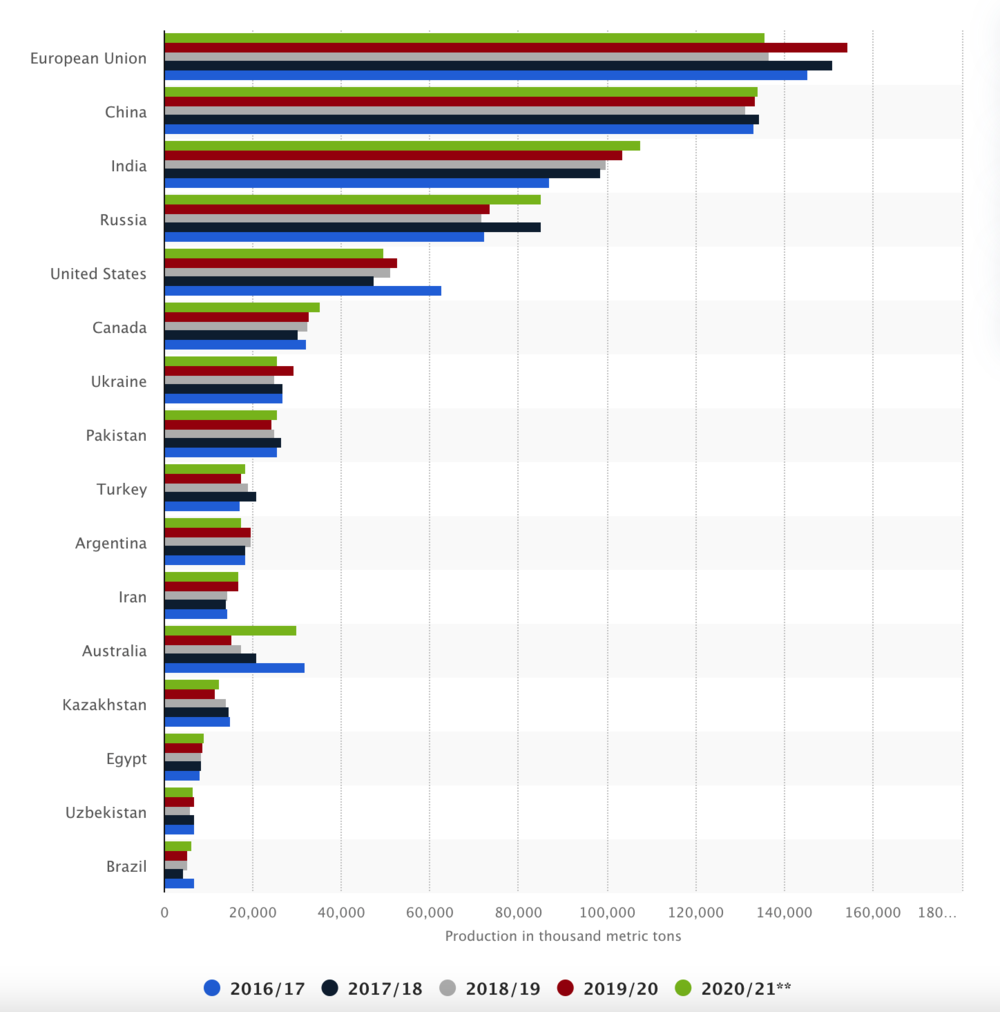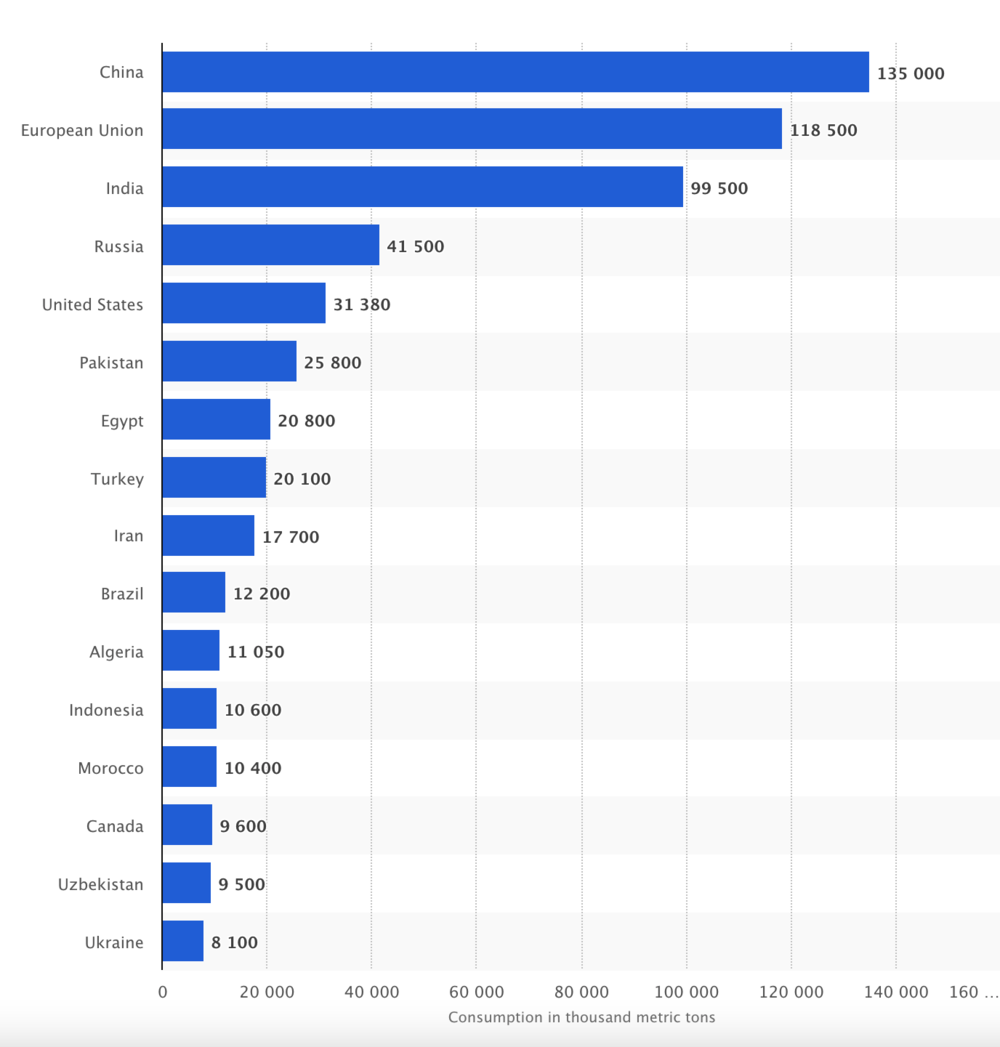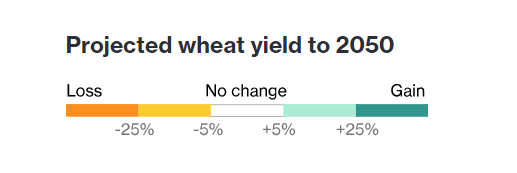Breaking the Boundaries: Using AI & Satellites for Wheat Fertilization
Did you know, China consumes almost 135 thousand metric tons of wheat every year? Regions like European Union and India are not far behind either. Wheat has been a staple item in prime parts of the world.
Still today, the majority of wheat production is done using centuries-old technologies. Developed countries like the USA, China, the EU, and many others are implying modern-day tech for better production. Whereas India, Pakistan, and Africa are still using the old traditions.
Wheat Fertilization is equally important in this field of study. Fertilization, in general, leads us to some other factors as well like surface and ground water pollution or contribution to climate change by Fertilizers. We will be looking into viable insights. These insights will allow us to break the boundaries of wheat fertilization.
Wheat Production: Where Are We Now?
According to the stats, European Union has been the leading wheat producer in the world. They produced around 135,800 metric tons in 2020-21. The production reduced by 20,000 metric tons from the previous harvesting year, thanks to COVID 19.
China cruising strong with nearly equal the production, where India being a prime producer of the food crop. Wheat production can be seen on a vast level in the States, Russia, Ukraine, Canada, Turkey, and Australia.
Covering almost 215 million hectares, Wheat upholds 2nd place in grain production worldwide. Annually, 775.8 million metric tons of wheat is produced worldwide, just after Corn.
Wheat is produced in almost all-region. Central and West Asia, North Africa, Europe, Oceania, and prominent parts of America produce in mass scale. However, in Asia and Africa, wheat is a dominant staple food.
Wheat Consumption Pattern: Wheat Supremacy!
Wheat is widely used as a staple crop especially around North Africa, Central, and West Asia, and America. Though European Union produces the most amount of staple crop, China consumes the highest.
European Union comes second, consuming around 118,500 metric tons of wheat last year. India, Russia, and the USA come later on the list.
Figure: Consumption of Wheat (Source: https://www.statista.com/statistics/1094065/total-global-wheat-consumption-by-country/)
The consumption pattern of wheat is diverse. Post shredded wheat is widely consumed by Americans. According to a survey, Americans consume up to 4 portions of post shredded wheat in a form of cereal every week.
On the other side of the spectrum, countries like India, Pakistan, and Bangladesh heavily rely on wheat as a source of calories. Many 2nd and 3rd world countries still consider wheat as a prime source of calories rather than its nutrition.
Recommended Climate and Weather Pattern for Wheat
In simplest terms, if a man can survive the climate of a certain region, then you can cultivate wheat on that turf. It does require some additional attributes. These attributes can be classified into three major subsections. These are:
i) Temperature and Humidity
ii) Soil, Irrigation/precipitation & Drainage
iii) Type of Wheat
Temperature and Humidity: Keeping it Nice and Warm!
Now, wheat needs a bit of warm weather to grow. The temperature should be around 21 to 24 Degrees Celsius. However, winter wheat requires a colder environment.
The humidity level is perhaps the most crucial aspect of the game. Wheat is prone to diseases in higher humidity. So, it is better to sow wheat in low-humid areas.
Indian Subcontinent has a higher humidity level, so they usually cultivate wheat during the spring-fall season. That is when the humidity levels are below the radar. Roughly around 14% to 20% moisture is necessary for good cultivation.
Soil, Irrigation & Drainage
Well-drained Loam or Clay-Loam soil is ideal for wheat cultivation. On top of that, irrigation/precipitation is another notable prospect. A good harvest requires 12 to 15 inches of water per hectare.
Drainage is required to drain out excess water from the fields. Leaving the excess water will increase the moisture and lead to various diseases. These diseases might end up destroying the full yield.
Type of Wheat
According to the growing season, wheat is of two types:
i) Winter Wheat:
This breed of wheat is sown in fall and harvested in late summer, cold and less-humid weather is ideal for a good harvest.The growing period is pretty long. For an example, wheat grows for almost 11 months in Germany.
ii) Spring Wheat:
The showing period mainly starts during the spring. The majority of the regions cultivate this type of wheat throughout the year. With good irrigation and care, the yield is phenomenal. The growing period is short. For example in Canada the growing season is from May to October.
According to the hardness of the grain, the wheat is of 6 major types:
i) Hard Red Winter
ii) Hard Red Spring
iii) Soft Red Winter
iv) Durum
v) Hard White Winter
vi) Soft White Winter
Usage of Wheat
Hard Red wheat contains more protein percentage and the texture is a lot darker. However, Hard White and soft white are suitable for bakery items like cakes, cookies, pieces of bread, and more. Soft Red Winter products are often marketed as ‘whole grain’ products.
This is mainly because the grain doesn’t need any trimming. Soft white is considered to be the healthier one. However, every grain has its merits. Global estimation says that the requirement of wheat will rise to 60% by 2050.
Hard Wheat flour is enriched with protein that helps to form glutine. It is ideal for bakery items like cakes, breads, buscuits and more. On top of that, 100 grams of when contains around 13.2 grams of protein, roughly around 25% percent of our ideal intake.
Not only the grains, but the by product of wheat production is also an excellent livestock for the cattles and other poultry animals. So, the usage of wheat is a vast area, and has something for every thing.
Fertilizer Market: The Economic Strangle?
In 2020, even in the pandemic, the market value of fertilizers worldwide was estimated to be almost 171,760 million US Dollars. This is nearly the same size as Ukraine’s GDP!
CAGR predicts that the booming market is estimated to grow by 2.7% from 2021 to 2027. This much growth indicated the popularity and mass usage of fertilizers in crop produciton.
Europe has been the leader in consuming nitrogen fertilizers. 64.3% of the net consumption was of Nitrogen-based, which is around 15million metric tons. According to FAOSTAT, in 2019, Europe harvested wheat roughly over on 62 million hectres of harvesting land.
But, the big question comes up, is using this much of nitrogen based synthetic fertilizers doesn’t bring any consequesces? The economical side of the market is one thing. The ecological spectrum, however, is a different ball game.
Recent studies show that, use of chemical fertilizers has been a core reason for greenhouse gas emissions from crop production. This has been the reason of climate change. If we look at the projection of wheat cultivation in the following years, the picture will be more clear.
Figure: Projected Wheat Yield to 2050 (https://www.bloomberg.com/graphics/2018-climate-crops/)
CERES-wheat crop model based on past climate data and HadGEM2 projections for 2050. Fertilizer, water management are same in both periods. Source: International Food Policy Research Institute
As you can see, global warming and climate changes are being a reason for shifting the wheat yields far more north.
Traditional Soil Testing: Is It Enough and Fast?
Now, taking a sample to the laboratory, run a set of tests, and create a report might sound effective for fertilizer decision making. But picture it like this. If you want your soil tested, and the nearest testing laboratory is two cities far, then you will probably let it go. This is laborious and time-consuming.
However, as the technology has advanced over the years, soil testing is now not limited to laboratories. On top of that, valuable insights into weather, humidity, climate, and other perspectives are now measured with great precision.
Thanks to artificial intelligence and satellite imagery, valuable information like these can be extracted within seconds!
AI in Harvesting & Fertilization: The New Era of Impact!
In recent times, AI has completely changed the game plan of every possible sector. You name it, AI changed it. From waking up with the alarm to getting back to bed, we are surrounded by technologies that run with AI.
Fertilization is a broader aspect. But, it can be done efficiently by using AI and satellite imagery. Research is done by DAGRI, the University of Florence, Italy and many others on using such technology.
By using satellite imagery, we can successfully measure the Nitrogen uptake while cultivating wheat. This valuable insight will allow us to plan a sustainable cycle of fertilization.
Spacenus: The New Breakthrough in Modern Agriculture
Spacenus is a state-of-the-art company that revolutionizes Modern Agriculture by providing tech-driven services. Our sole mission is to provide our clients with clear insight and advice on improving their yield efficiently.
We work tirelessly with farmers and crop advisors to create products that revolutionize agriculture. Our state-of-the-art maps, web apps and APIs are available worldwide for many segments which include Agricultural Input Producers, AG retailers, Agronomic Advisors, Farm management software providers and more.
We provide solutions to our customers who are seeking data-driven agricultural recommendation services. Our mission is to achieve Profitability for farmers and sustainability for environments at the same time.
Speaking of Wheat Fertilization, You can use the Field Map API of Spacenus to have a clear understanding of what your land needs. This will ensure sustainable fertilization.
Final Thoughts
Sustainable agriculture will reduce the risk of Global Warming as well as limit the chemicals getting lost into the environment. On top of that, the yield will be sufficient enough to feed the whole world.
It is our world, and to make the world a better place, we need to step up. We need to be innovative. We will have to raise from the ruins and start running for prosperity. Humans have the brains to conquer anything. And thanks to technology, we can do that. All we need is the willpower to change the world.




